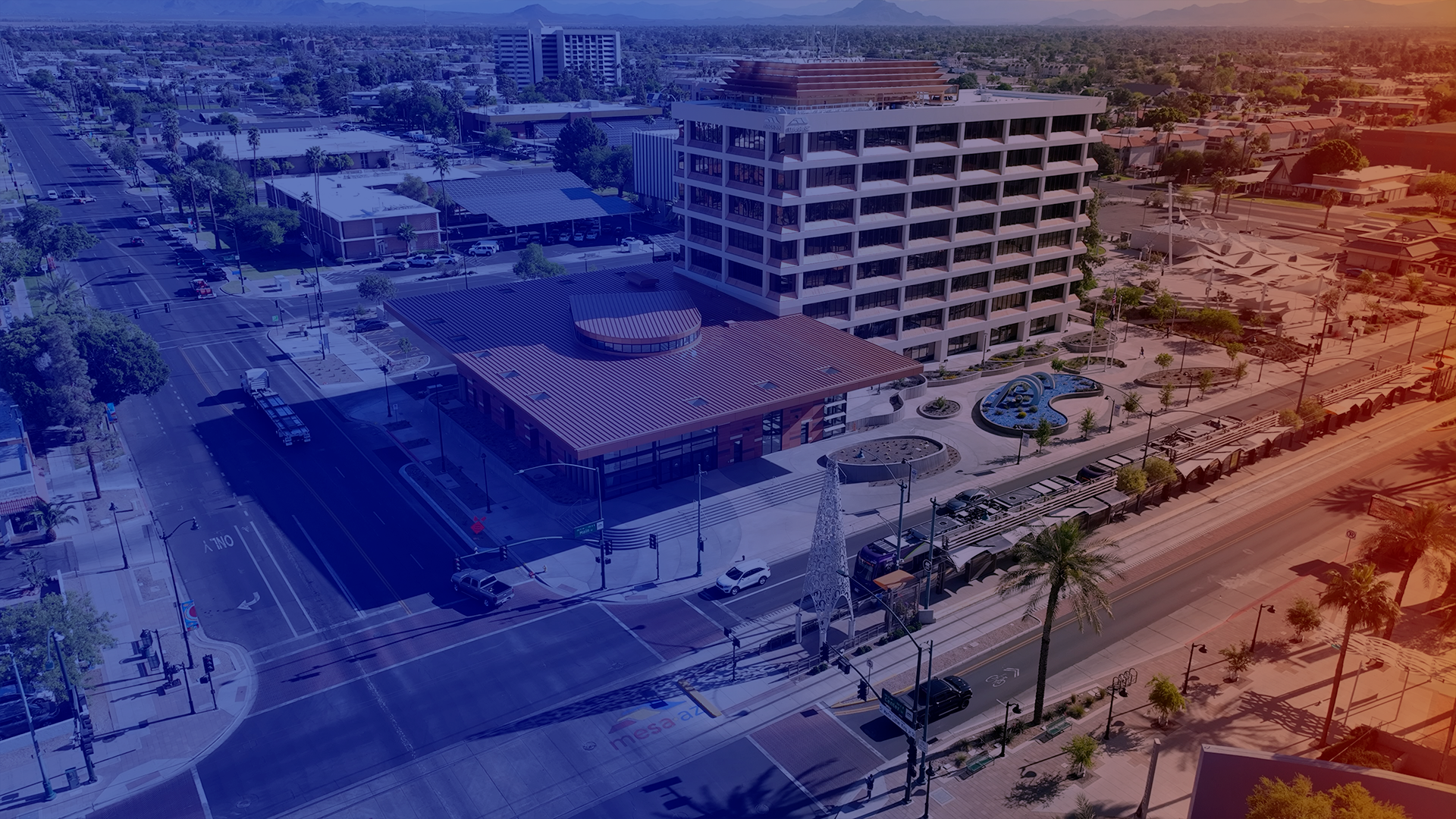

MesaNow
City of Mesa News


City of Mesa News

True crime junkies know all about forensic technicians. All kinds of series on the subject have been streamed and binge-watched, but the reality inside Mesa's crime lab is a little different.
Science is painstaking, detailed. It doesn't give the immediate gratification you get on TV. A piece of evidence can be processed in hours or days. It can be ordinary, like a gun, or bizarre, like a bike rack. And the small army of forensic technicians in Mesa's lab can turn to dozens of tools and tricks to pry secrets from physical objects.
Before a piece of crime scene evidence with fingerprints or potential DNA can be analyzed and compared to a match in a database, there's a whole team of people whose sole job is to process that evidence first.
They may not be the ones finding who exactly is connected to a case, but their job is just as important to properly collecting that evidence so it can later be linked to someone in the crime or to find out what happened.
The city of Mesa has its own group of people dedicated to this job in its nearly 50,000-square-foot crime lab near Main Street and Country Club Drive. The lab serves Mesa, Tempe, Gilbert, and Queen Creek whenever service is requested.
Inside, 86 employees and some volunteers work as members of the crime scene unit, administrative section, as interns or as any of the nearly 40 forensic scientists in different lab sections.
After a crime has been committed and evidence collected, a detective or police officer emails a request to the Mesa Forensic Services facility.
Then, an administrative support assistant looks over the request and sends it to one of nearly 11 units that could perform the requested tests, according to Leslie Jeppesen, one of those assistants.
If the evidence needs to be tested for latent fingerprints, swabbed for DNA, or needs preliminary drug testing, it'll need to go to the evidence processing unit.
Someone like Keia Pagenkopf, a senior crime scene specialist, takes the evidence to her lab that she shares with two other people and reads through what detectives have asked her to run.
She handles between two and ten pieces of evidence and works up to three cases per day. Last year, her unit alone processed 618 cases, and so far this year the unit has completed 300 cases, according to Pagenkopf.
Pagenkopf said a lot of what her unit receives are guns, knives, and drug paraphernalia, but the team could process nearly anything.
"Any evidence that a suspect touched during a crime," she said, "so that could be a doorknob, vase, a door, shower curtains." She said the lab has even received bike ramps and frying pans.
All of it goes through the lab to be tested.
Some of these tests include using superglue to reveal an "invisible" or latent fingerprint, testing which chemicals will reveal a print on a surface like paper, and swabbing for DNA. Another tool used is a $20,000 handheld device called TrueNarc to pre-test if a drug is one of over 20 controlled substances using light waves.
Superglue, chemicals: finding fingerprints
When Pagenkopf first gets an item, she said she inspects it for any visible fingerprints so she can photograph them.
Sometimes taking such a photo can up to 45 minutes, she said. For instance, it could be a pretty lengthy task if there is a visible fingerprint located on the trigger of a shotgun.
"I have to figure out how to get the shotgun underneath my camera so that the trigger is visible with the camera lens, which means I have to prop it up without falling."
If the print is on a smooth, non-porous surface like glass or plastic, Pagenkopf said she utilizes superglue fuming to make it more visible.
Pagenkopf explains the superglue process like this: the evidence with the latent fingerprint is placed into an airtight chamber so that there is heat and humidity. She then puts some superglue into a small metal tin that is placed onto a heating element inside the chamber.
As the superglue heats up and turns into smoke, it turns into plastic, or polymerizes, according to Pagenkopf. This residue then adheres to the print on the evidence to show a more visible print, which is then photographed.
With the new print, Pagenkopf said she then pours a liquid chemical called fluorescent dye stain over the entire piece of evidence so that it sticks to the new print. Once that is dried, she said she goes to a darkened room, turns a forensic light source on to a wavelength that makes it blue, and looks at the evidence through orange goggles.
"This sounds crazy. But we examine the evidence and then the fingerprints glow." And again, they photograph the print in this new form.
After all those steps are complete, Pagenkopf uploads the images to a secured drive so the lab's latent print unit can compare the photos to known prints or scan the better-quality prints into the Automated Biometric Identification System to find a match.
But all those steps are just for prints on non-porous surfaces. There's a different set of chemicals for fingerprints that are on porous surfaces like paper.
On these surfaces, Pagenkopf said, fingerprint residue absorbs into it. Because of that, a variety of chemicals are used to react with the print. She said the lab has chemicals that react to prints made out of amino acids, some that react to salts or chlorides, and some that react to fats or lipids.
"We don't know what the fingerprint is made out of," Pagenkopf said, "So we use different chemicals to see if we can develop prints made out of any of those substances."
DNA or fingerprints?
Another key process in Pagenkopf's lab looking for biological evidence on items.
This is done by visually examining the evidence or using a forensic light source, which is a common practice for all crime labs, according to Pagenkopf.
The light source makes such evidence easier to spot on items because different substances react to different wavelengths of light, Pagenkopf said. For example, she said, blood appears dark while urine, semen, vaginal secretions, and saliva will glow when examined under certain UV wavelengths.
But before anything, she said she has to determine if a piece of evidence can be swabbed for DNA or processed for latent prints first.
Pagenkopf said that when processing for prints, a bunch of harsh chemicals are used on the evidence. And when swabbing for DNA, fingerprints might also be swabbed away.
"Both swabbing for DNA and processing for prints -- they're mutually destructive of each other." But neither pieces of evidence is placed above one another, she said.
Instead, Pagenkopf said she examines the evidence to to determine what is the best that can be done. It usually ends up being that she processes for the prints first and swabs afterwards.
And since there are a bunch of chemicals in play when that happens, Pagenkopf said the lab has many layers of clean techniques they use. This includes using fresh gloves every time they step away from evidence to complete a different task in the lab, wipe down their bench area with a cleaning solution, and putting a lab coat on their bench.
After the evidence is swabbed, it is sent off to the biology unit of the department where technicians further analyze the DNA.
'It's either there or it isn't': life in the lab
The three-story lab is a secure place. No eating, no drinking, and no open-toed shoes allowed.
It can take Pagenkopf between one to three days to complete a case, she said. However, depending on the request, she could get it done in as little as one hour. Each case is different.
"One day I might handle 20 pieces of evidence which could be 14 bullets, 5 drug samples, and one gun," Pagenkopf said in an email. "Even though this sounds like a lot, it only takes me one day to complete."
But sometimes she might have one piece of evidence that's complicated. This could be a drug trafficking package with multiple cardboard boxes that holds 20 drug baggies and a huge bag full of 5 drug bundles made out of 100 layers of various items. Something like this one piece of evidence could take her three days to process, she stated.
With all that Pagenkopf and her other partners handle in the lab, there is a rare occurrence of mistakes.
Something like breaking a piece of evidence or cross-contaminating doesn't often happen in her unit because they are "really careful all the time," Pagenkopf said. She said the most common mistake that is made are typos such as a misspelled word or name.
But when other mistakes do happen, Pagenkopf said they just document it and move forward.
"People are normal and they make mistakes. You can accidentally touch something, you can cross-contaminate. It's just documented." She said the key is being open and honest about it and simply explaining what happened.
When she completes her evidence processing, she writes up a report that details that she received the evidence, all that she did with the evidence in the lab on which date, and what the results were. Once the report is complete it is sent to the detective or investigator in the case.
For Pagenkopf, the evidence is just evidence. The public may be interested in the connections that it has to a suspect or victim in a case, but in this job, Pagenkopf said the field requires unbiased people.
"Sometimes you don't even read too much about the case because it's either there or it's not there. That's just the way that is. There's either DNA there or there isn't. There's either a print there or there isn't. It's either meth there or it isn't. You either have this in your blood or you didn't. That's it."